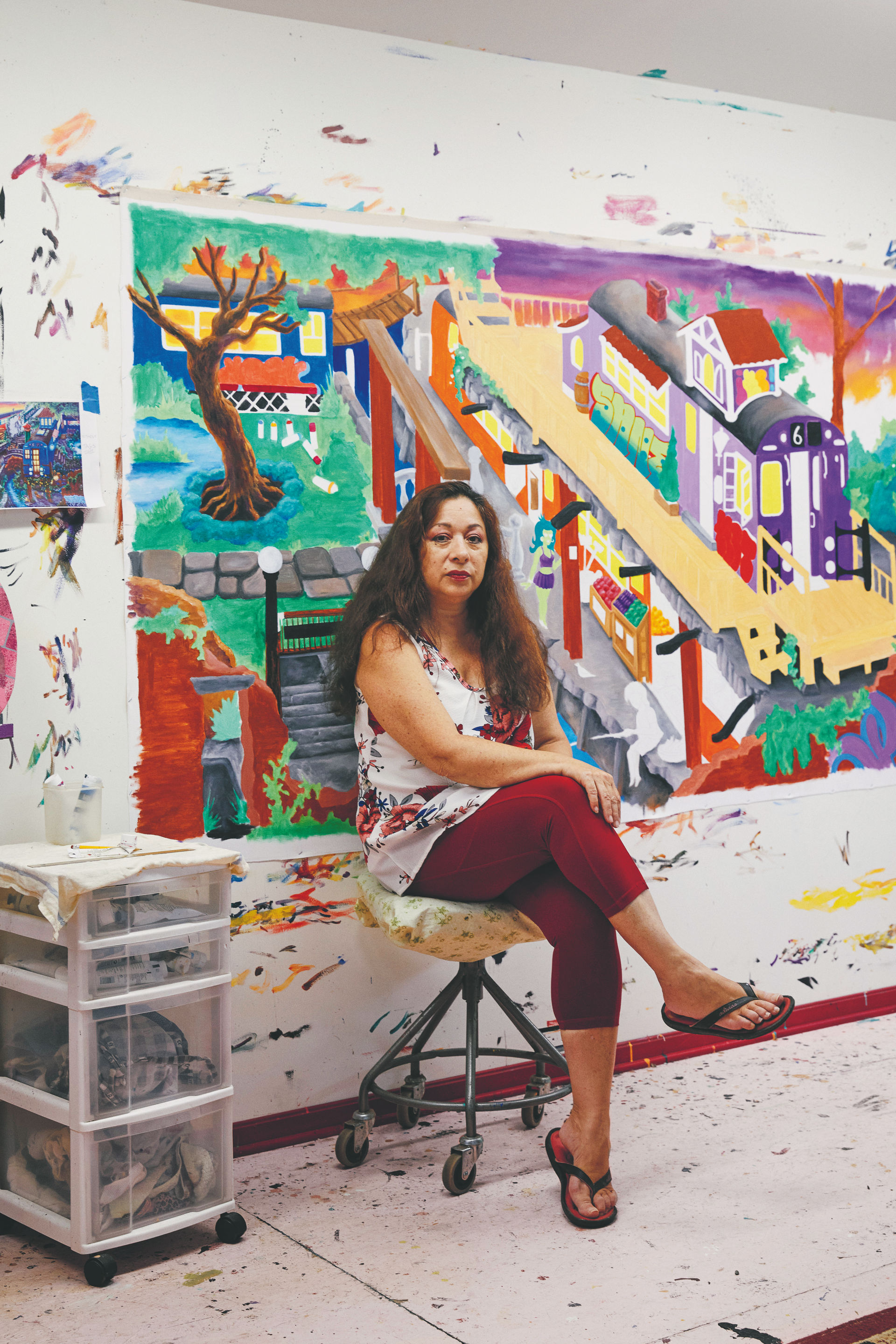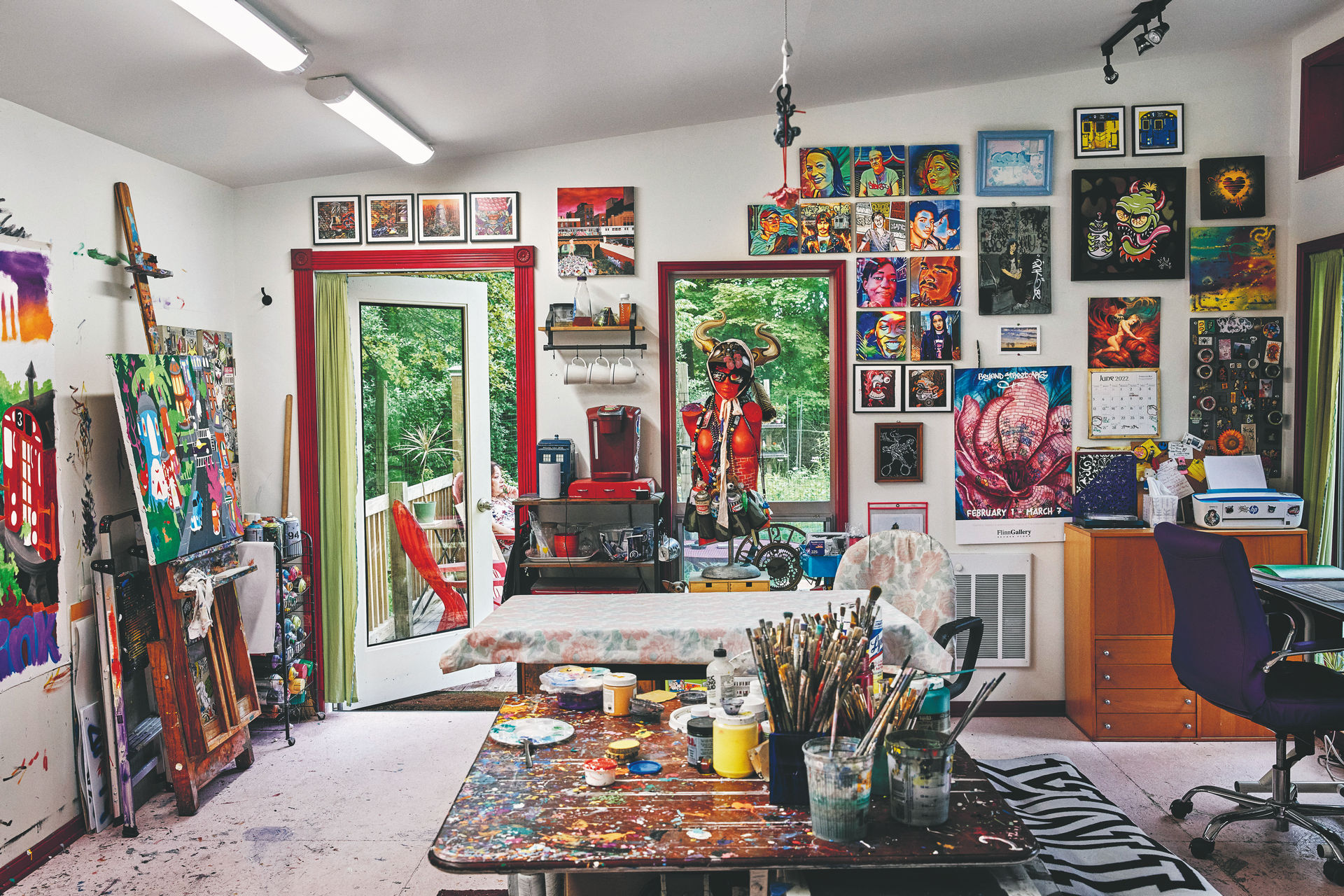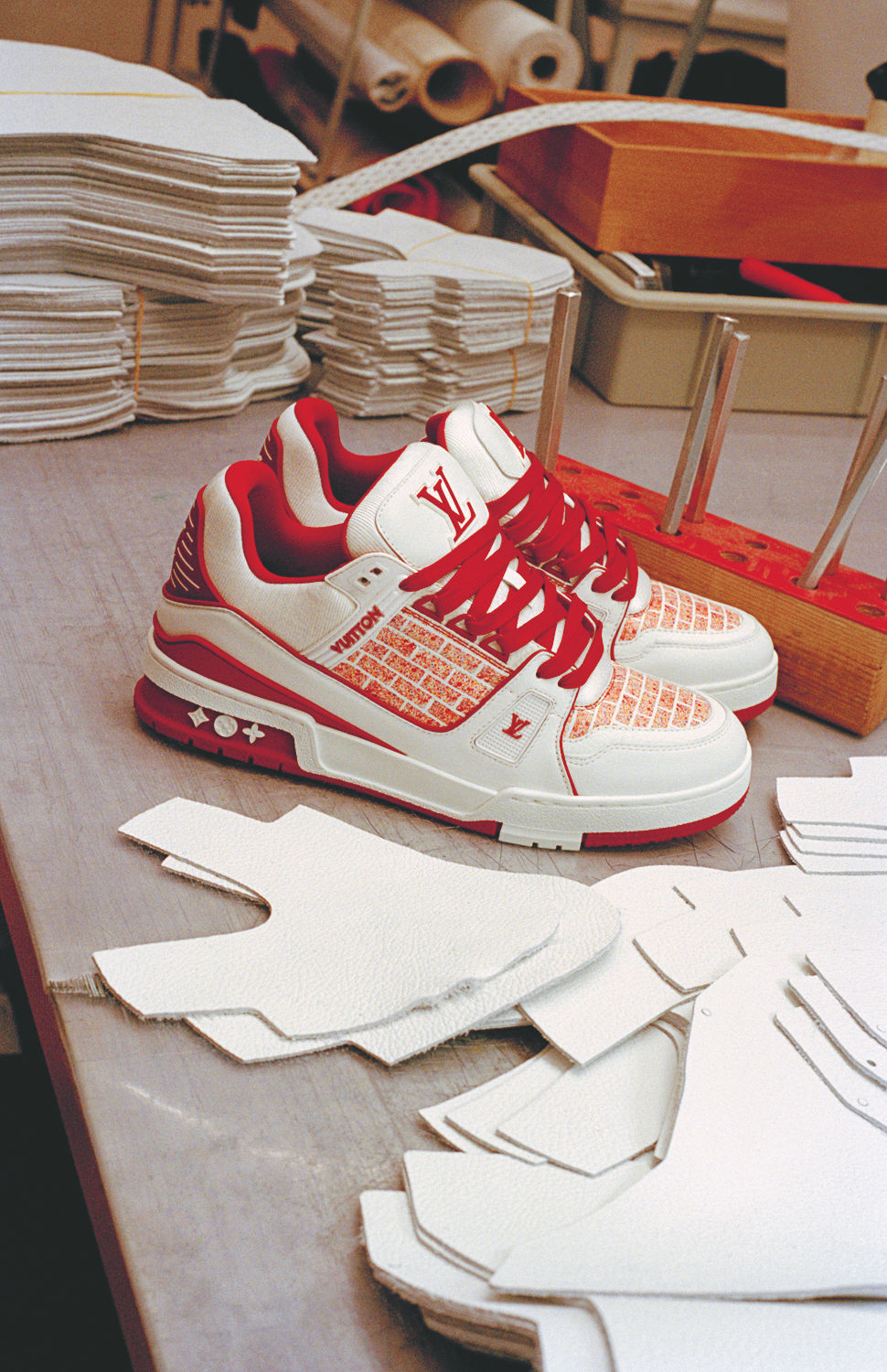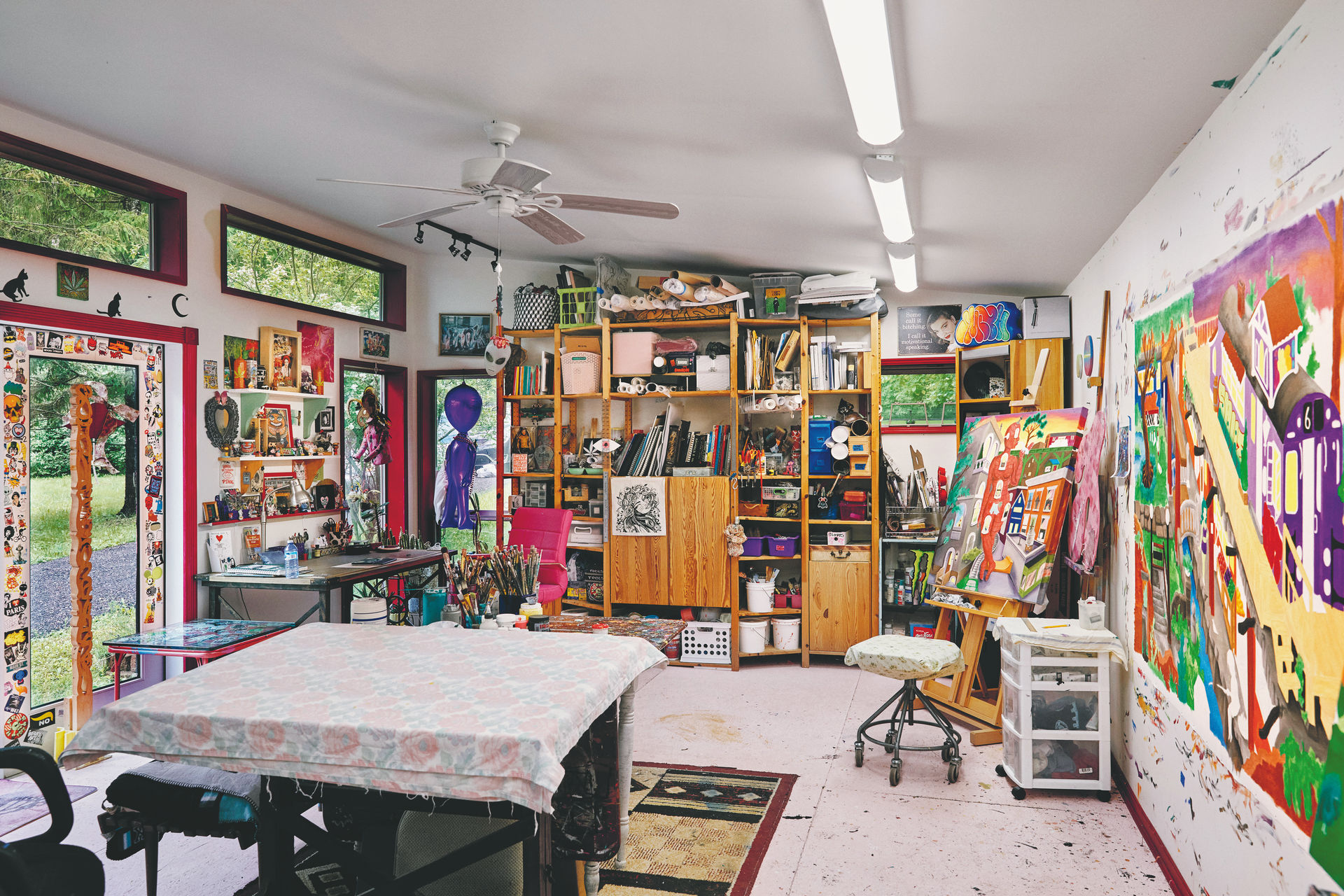THIS FEATURE IS PUBLISHED IN THE 6TH EDITION OF GRAZIA MIDDLE EAST. DISCOVER MORE HERE.
Lady Pink, also known as Sandra Fabara, is a New York-based artist known for her pioneering work in the graffiti art movement of the 1980s. Her iconic murals and pieces have been exhibited in galleries and museums around the world, making her one of the most influential female artists in the genre. Her work often addresses issues of social justice, inequality, and empowerment, and she has used her art as a tool for activism and change. By exhibiting her work in public spaces, such as on the sides of buildings and in subway stations, she has been able to highlight important issues and attract the attention of luxury fashion house, Louis Vuitton.

Lady Pink’s collaboration with Louis Vuitton began in 2008 when she was commissioned to create a limited edition scarf for the brand’s Spring/Summer collection. The scarf featured Lady Pink’s signature style of bold colours and graffiti-inspired designs, with a mix of its iconic monogram and her own personal touches.
The success of the scarf collaboration led to Lady Pink being invited to create a custom installation for the brand’s store in New York City. The installation featured a large-scale mural of Lady Pink’s signature character, a female figure with a spray can in her hand. The artist adopted this artistic pseudonym as a way to assert her presence and challenge the male-dominated graffiti and street art scene of the ’80s. By adopting a name that emphasised her gender, Lady Pink aimed to challenge gender norms and stereotypes within the graffiti and street art culture, where women were often marginalised or overlooked.
In 2010, Lady Pink was once again invited to collaborate with Louis Vuitton, this time on a collection of handbags, including the iconic Speedy bag and the Neverfull tote. A decade later, she was invited to participate in the “Artycapucines” project, which had six contemporary artists create their own versions of Vuitton’s iconic Capucines bag. The bag collabs were a hit with fashion and art lovers alike, as it brought her work to a wider audience and helped to bridge the gap between the worlds of street art and high fashion. For Louis Vuitton, the collaboration was an opportunity to connect with a new generation of consumers who were interested in the brand’s heritage and craftsmanship and showcase the Maison’s commitment to creativity and innovation.

Summoned once again by Virgil in 2023, Lady Pink takes stride with her most relevant collaboration with Louis Vuitton to date, bringing the iconic brickwork of New York City boroughs to a limited edition sneaker. The collectable serves as a testament to the enduring impact of graffiti art and highlights the growing acceptance and appreciation of this dynamic art form within the fashion industry. The inspiring legacy left by Virgil for creative collaborations paves the way for continued innovation at the intersection of art and fashion. Lady Pink’s fearless approach, commitment to social issues, and ability to blend street art with mainstream culture inspires future creative artists to push boundaries, challenge norms, and carry forward the spirit of creativity and activism. Here, we get a little insight into what makes Lady Pink tick.
GRAZIA: Lady Pink I am guessing is not the name on your birth certificate?
LADY PINK: Ha! No, the first crew I rolled with decided I should have a female (street) name. I was the only girl in any crew in New York City at all. They wanted to use my status for novelty so that they could get famous. “That’s the crew with the girl. Oh yeah, that’s the crew.” Pink was it, definitely. I didn’t care for other colours much as it relates to a name. I like purple, but that’s such a big word, so Pink it is. Then I would read a lot of historical romances about the European aristocracy, Duke, Duchess, Lady this, Lady that. I was taken by this stuff since I was a little kid. I would gobble up the history and all that useless romance. I titled myself Lady Pink in high school, and then we became royalty. My crew were the top of the totem pole there. We would spend hours at the lunch table. I’d get my own seat. I’d snap my finger, some kid will go get me my food. We were treated like royalty. We’ve had our names on the doors of all the best nightclubs in New York City. I’d just walk in and they would shower me with all kinds of fun stuff. It was a whirlwind of activity in the early ’80s on the streets.

GRAZIA: So is the Lady a graffiti or street artist?
LP: Graffiti for sure. There is a vast difference. Graffiti writers focus on font, on letters, on style with spray paint, hopefully on something with wheels. Like a train. A trolley. Maybe a bus. Whatever it is, as long as it’s rolling. Our canvases want to move around and not be still. Street artists work in different mediums, working in anything like wood, metal, glass, stickers, posters, stencils, knitting, etc. Paintings of old ladies knitting and putting them where they don’t belong. What we have in common though, is that we are kindred spirits because are both willing to just take control of our environment by applying our art where we see fi t. Graffiti artists are vandals, however, whereas some street artists will only create their work legally.
GRAZIA: It’s all coming together for me now: just having tagged something and needing to run away from the cops with a moment’s notice, and fall out of your sneakers because they were untied… How poetic then your collaboration with Louis Vuitton…
LP: The sneakers left in the subway, huh? You know that game? Well, sneakers were important to us very early on when hip hop appeared for some reason… everyone had to sport nice kicks. The honest truth is that, see, there’s no bow tied in the front. The laces are inside. That was the hip-hop way. The funny thing is that when the police would come, you’d jump right out of your sneakers and go. You’d leave the sneakers behind. But no one wanted to tie their sneakers because it was so uncool. It’s like “Oh, well maybe you lose them.” But it took decades before I could finally tie my shoes and get over that hip-hop thing because it just makes more sense. The shoes stay on when you tie them. They’re nicer when you don’t tie a bow. But still, I’m afraid I’m going to fall out of them in a minute, even if I’m not tagging something.

GRAZIA: Tell me about tags and how they are symbolic.
LP: They are symbolic insofar as we are one big dysfunctional family creating our art. Back in the day we were all like a guild. Everyone belonged to a different crew, like different guilds. Some were very prestigious crews or by invitation only, whether you’ve got talent or you’re a badass or something like that. We can differentiate exactly where people are from by their tags. You are from Brooklyn, you’re from Queens, you’re from Paris. You are from this country, that country. And when I started, I lived in Queens, which is a nice borough with gardens and trees and mild-mannered people and not very hip. But I was rolling with some guys from the Boogie Down Bronx. I developed the Bronx tag just to fool people like I was from the Bronx, but I wasn’t. It took a few years before I finally embraced the neighborhood I came from. I take great pride in belonging to Queens. My style says I’m from Queens, I’m a female, and I’m from the ’80s, all of that is communicated by my tag.

GRAZIA: How do I see that visually just from your tag?
LP: It is how you slant the letters, how you curl them, the shape, the angle, how the beginning is smaller and gradually gets larger, or the way it’s tipping. It’s just every little nuance of a letter is very, very symbolic. You can instantly tell when someone is an amateur. It’s like, “Oh, you tilted the L, but the wrong way, you know nothing.” It is like listening to a fifth-grade orchestra of children and then the Philharmonic. There’s a massive difference. You have to know style. I see many enthusiastic young people show me their letters. “Look what I’ve done.” I’m like, “Oh God, you hurt my eyes. You hurt my eyes.” I will say that in front of a whole classroom. There is a method to our madness. You have to study good and hard before you can bring it out to daytime. Vandalism or not, you must study hard and get the art right.
GRAZIA: What would you say the role is for graffiti now today versus when you were running?
LP: It is still serves the same purpose. Graffiti is a rebellious act. We need rebellion. We need rebellion in a lot of different things because the world gets stagnant, gets stale, no one’s questioning the status quo. We’re just following like sheep. Why is art the commodity? Why is art in galleries and some museums just terrible to look at? Because it’s just a commodity and investment. It’s just a money thing. It’s not even aesthetically interesting anymore. It excludes 99 per cent of people in its capitalist design. Is that really fi ne art? Is that what art is for? Who made this rule up? Art is by the people, for the people, and it could be exhibited anywhere, at any point. Art does not have to be indoors; art need not be exchanged for money. It could just be around the corner, a little cute cat that makes you smile every time you are on your way to the subway.
THIS FEATURE IS PUBLISHED IN THE 6TH EDITION OF GRAZIA MIDDLE EAST. DISCOVER MORE HERE.








